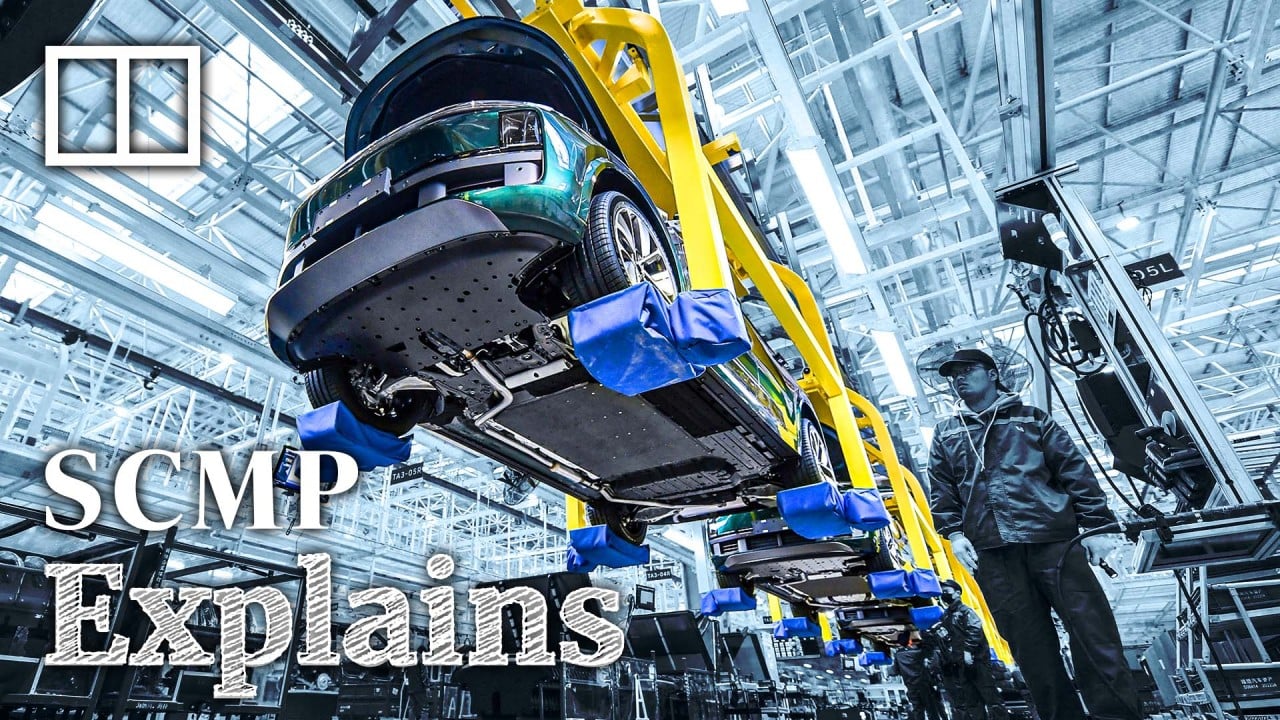
China must rebalance economic development efforts to silence the West’s ‘overcapacity’ concerns
- Beijing sees US criticism of overcapacity as an excuse for Washington to ratchet up protectionist measures against Chinese-made products
- Concerns about industrial overcapacity has also spurred China’s leadership to look into a chronical imbalance in the nation’s economic development
Beijing remains unfazed by the US argument because China’s manufacturing capacity is primarily based on its economic advantages, not unfair state subsidies.
Still, Chinese EV makers are expected to continue expanding their business overseas, taking on all comers.
It was not that long ago when streets across mainland China were jammed with American, European, Japanese and South Korean petrol vehicles. China did not complain about overcapacity at the time, so why is it difficult for Washington or Brussels to accept Chinese EVs being driven in the streets of America and Europe?
How China became the big fish in the new-energy sector
As such, it is not too hard for Beijing to frame the whole debate about overcapacity as a sign of the West’s refusal to accept China as an economic power.
For decades, the West cheered China’s role as the world’s factory floor when the main exports were cheap shoes and toys. Today, the West has turned increasingly protectionist against China amid efforts by the country to move up the value chain.
According to a Xinhua news agency opinion piece, criticism about industrial overcapacity is “in essence an attempt by the US-led West to suffocate China’s industrial advantages”.
China’s Li Qiang dismisses ‘overcapacity’ concerns in talks with Janet Yellen
The issue of industrial overcapacity, meanwhile, has spurred China’s leadership to look into a chronical imbalance in the nation’s economic development.
After more than four decades of rapid economic growth, most of China’s 1.4 billion people are still unable to crack the middle-income ceiling, as their share of household spending remains below the world’s average.
Consumption in China also accounts for just 13 per cent of the world’s total, forcing the country to rely on overseas consumers to bolster growth across a range of industries.
The country’s so-called mean hourly wage – for people working as taxi drivers, couriers or in factories – is said to be 30 yuan, compared with the US$30 hourly rate for US auto workers.
With such wage disparity, the country’s current status of selling more to the rest of the world than what the nation consumes is likely to continue, which could revive accusations of industrial overcapacity.
China’s real challenge is not to win the war of words about industrial overcapacity, or bite the bullet in growing exports amid lingering disputes. In the end, China must rebalance its economic development efforts to maintain its position as a competitive producer, while also helping its large population to become affluent consumers.


